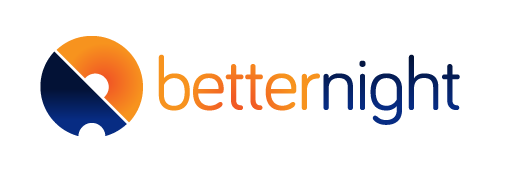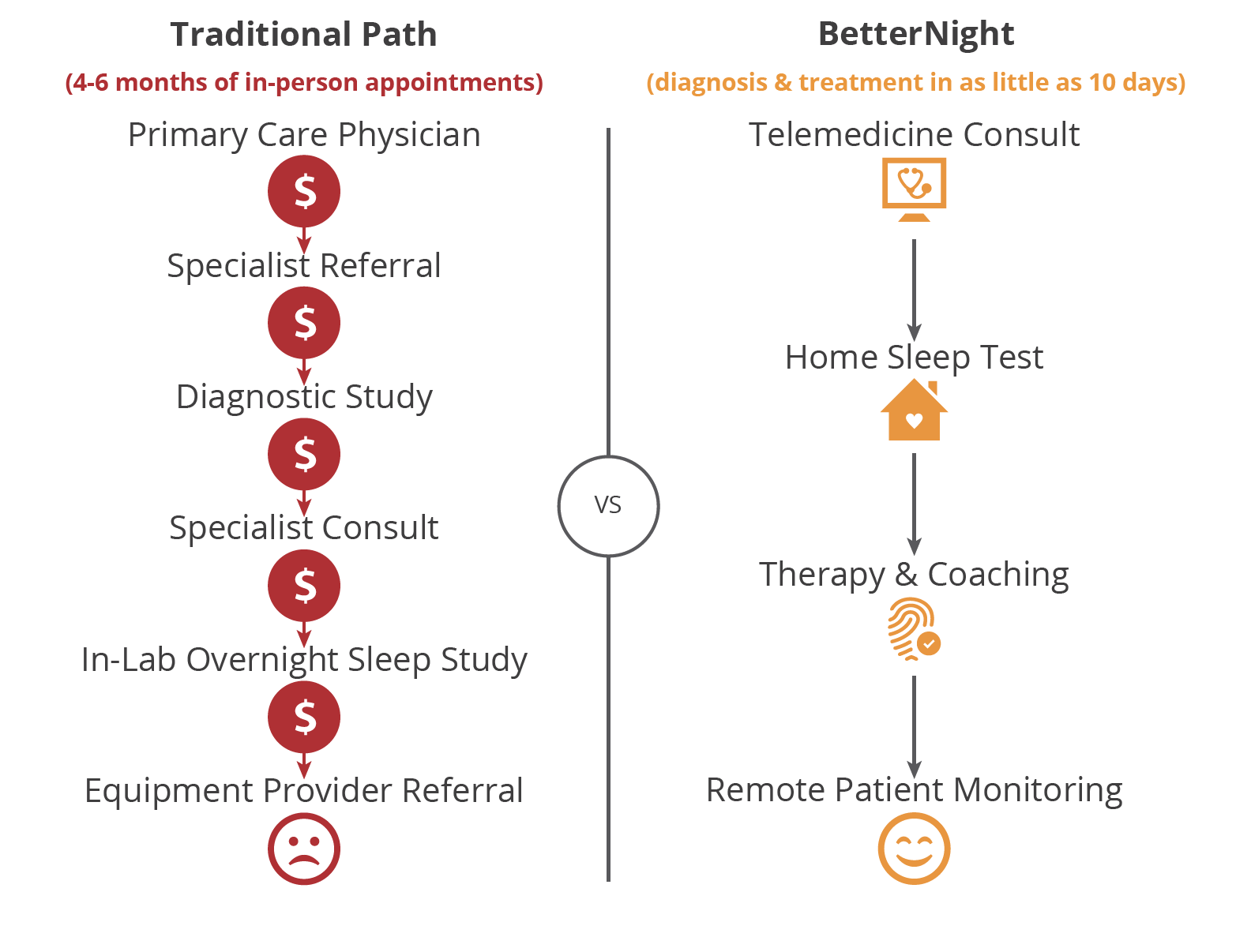Transforming Sleep Apnea Care With Patient-Centric Telehealth
Sleep medicine has made significant advances in the past decade as the number of sleep disorders in the United States continues to increase. With over 80 classified sleep disorders currently defined, obstructive sleep apnea continues to grow in prevalence. Considered one of the most common sleep disorders in the U.S., an alarming 80% of people with sleep apnea remain undiagnosed. Although most characterized by snoring, obstructive sleep apnea (OSA) is a severe health issue with chronic comorbidities including cardiovascular disease, high blood pressure and diabetes.
Despite an increase in sleep apnea research and education, the widespread presence of sleep apnea has not reduced. We can understand this paradox by looking at the current state of our sleep healthcare system, which needs to meet the needs of patients on their journey to improved health.
Inefficient and Costly Traditional Patient Pathways
The traditional route to diagnosing and treating sleep apnea involves silos of care with practitioners not well integrated into an overall care program. Most patients who show sleep apnea symptoms - the signature nighttime snoring, morning headaches, daytime fatigue and brain fog - will start with a visit to their primary care physician. Because most physicians are not sleep medicine experts, patients are often sent to a sleep specialist. These appointments can take weeks or even months to complete, each with its associated cost. Lab or in-home diagnostic tests will follow, often needing more adequate instruction.
While the patient is the common denominator among the various practitioners involved in diagnosing and treating sleep apnea, more collaboration and communication is needed between these doctors.
Post diagnosis, when a treatment plan is supplied, the patient is often sent to a DME provider, another disconnected silo in the healthcare system. Continuous Positive Airway Pressure machines, or CPAP, have been the gold standard in obstructive sleep apnea care. CPAP uses pressurized air that flows through a mask and tubing, resulting in continually opened airways. Adapting to CPAP therapy can be daunting and confusing, especially for a newly diagnosed OSA sufferer. What if you have questions or are wondering if you are adjusting well? Who do you talk to?
The current sleep healthcare system does not offer a continuum of care inclusive of all the practitioners caring for the patient. Often, the patient is left with a feeling of having nowhere to turn, which is a possible explanation for the large number of sleep apnea patients who never get diagnosed or, once diagnosed, never follow through with their prescribed treatment.
Patient-Centered Telehealth
Advances in telemedicine have helped consolidate sleep apnea screening, diagnosis and treatment into a coordinated “one-stop shop” providing care coordination. BetterNight, the leading provider in sleep health care for over 25 years, is a fully integrated telehealth sleep apnea solution that works seamlessly with a patient’s primary care provider. BetterNight provides initial consultation with a Sleep Specialist, all from the comfort of your home or office. From there, BetterNight will coordinate a home sleep test.
Unlike the disconnected providers that bounce a sleep apnea patient around, BetterNight employs all the clinical and support staff. The continuum of care includes over 300 physicians and Sleep Specialists, including board-registered Polysomnographic Technicians, Respiratory Therapists, Cognitive Behavioral Therapy Counselors and Data Analysts.
Coordinated and Collaborative Sleep Apnea Patient Solution
Perhaps most importantly, BetterNight works with the primary care physician, connecting all providers in the patient’s care program. We guide the patient along each step, ensuring no confusion about where to go if they need help or have questions. We connect all phases of the care journey with transparency and expert communication, providing the comfort of knowing they are well cared for.
BetterNight uses proprietary data analysis software to gather and store data from the CPAP machine and can create patient-specific reports to hand off to physicians, allowing for greater transparency in care. This software can look at behavior change and where patients may be struggling and reach out to them via personal counselors who work hand-in-hand with patients.
This “human-enabled technology” allows BetterNight’s highly trained Respiratory Technicians and Sleep Coaches to be alerted to usage and connect with their patients to help motivate and re-educate. This combination of technology and skilled personal coaching sets BetterNight apart and accounts for its high compliance rates.
Better Pathways, Better Sleep
While the journey from screening to diagnosis to treatment of sleep apnea used to be overwhelming, the BetterNight sleep solution provides a proven, convenient, and fully integrated system.
Patients get personal, individualized care with highly trained specialists from the comforts of home. And unlike the broken healthcare system, their primary care physician is up-to-date with their therapy progress.
If you are suffering from obstructive sleep apnea, BetterNight is here to help with a convenient, proven telehealth solution to ensure better sleep and overall health.


